
Overview: Brutal is a psychological thriller about a mother named Maya, who absentmindedly leaves her baby outside a grocery store. When she rushes back to retrieve the child she discovers it’s been kidnapped, the film then plummets Into the mother’s psyche as she’s forced to navigate a 15 story tower block in order to save the child.
What were your initial discussions about the visual approach for the film? What look and mood were you trying to achieve?
The narrative juxtaposes memory and linear story telling with this in mind director Jordan Chandler and I always knew how important was for us to emphasis the transition from reality to surreal, Jordan is an extremely visual director and it was so easy to start creating this world with her, we let our imagination run wild…
The film begins with coherent lighting, muted colours, and an almost grey landscape. As Maya discovers her child has been kidnapped the colour in the lights begin to slowly progress into unnatural tones and this is a very dramatic change of scenario.
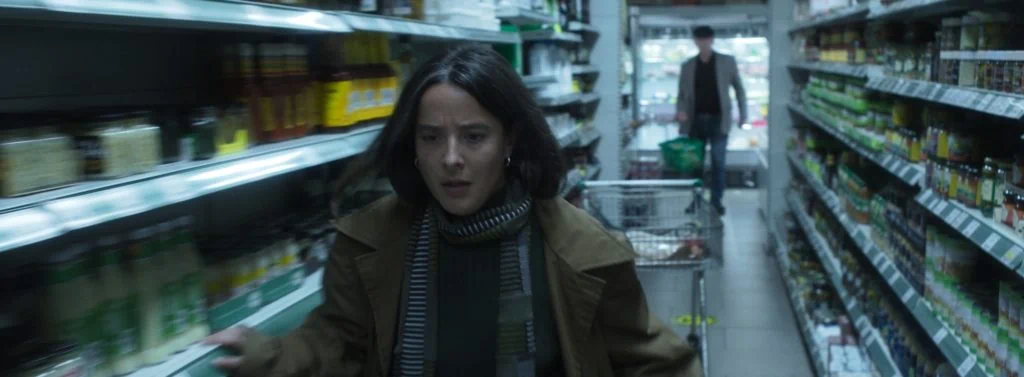
What were your creative references and inspirations? Which films, still photography or paintings were you influenced by?
We had to create 12 unique moods, so our visual inspiration comes from films like Antichrist, Amer and We Need to Talk About Kevin.
But the stronger reference we got from Jordan was the video game Silent Hill, she always had this video game in mind as how she wanted the film to feel, from there we started developing our own look.
Later on in conversations with Nathalie Carraro (Production designer) we started looking at still photographer Gregory Crewdson, who ended up being my main source of inspiration specially for the scenes in the set built.
What filming locations were used? Were any sets constructed? Did any of the locations present any challenges?
Our main location was Maya’s flat and the main challenge was that for half of the scenes we shot there, it had to be filled up with water up to 2ft. To achieve this, our production designer and her team had to built the set inside a huge tank to be able to fill it up with water, she also had to completely re dress this space in only 48hrs because we shot there twice, but it had to look like years had passed for when we shot the second half.
For the constructed set one visual challenge was: How to make it look real? We didn’t wanted to look like a set, to the point where it could be distracting, so I had to do a lot of testing with Nathalie to come up with the perfect texture and colour for the wall paper, we tried testing different lights and gels until we liked the combo.
The main camera challenge was that we wanted a P.O.V from water level, but we didn’t have the budget for a scuba cam so we got a big fish tank and solve all the shots in the water by setting the Venice inside the tank and shooting through the glass, it gave the right sensation of being under water.
We had other locations outside the stage: a grocery store, parking lot, a launderette, a pub, a theatre, and street exteriors.
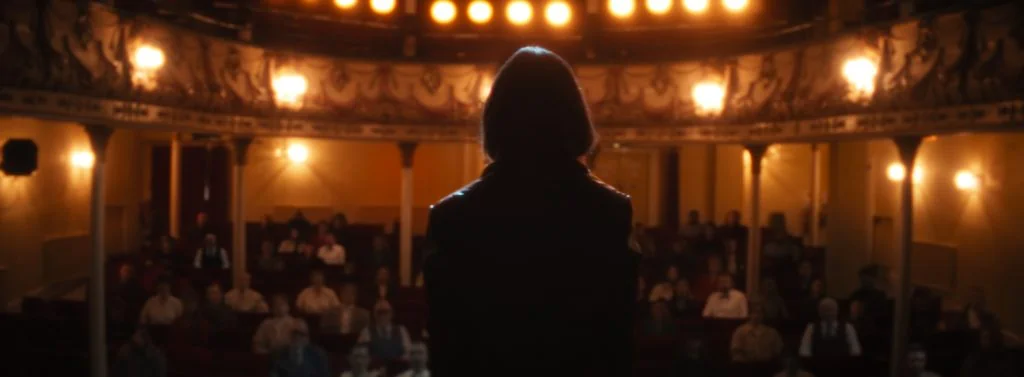
Can you explain your choice of camera and lenses and what made them suitable for this production and the look you were trying to achieve?
We decided to shoot with the Sony Venice for the main part of the film, knowing I was going to be working on low light situations we had to pick a camera that will have enough latitude to hold information in the blacks even when minimal lighting was used.
The first 2 scenes of the story are based in reality to then jump into surreal and finished back into reality, to achieve the right sensations we decided to shoot the the reality scenes with spherical lenses Cooke Panchro classic and the surreal scenes were shot with a unique set of vintage rehoused anamorphic lenses to enhance the “out of this world” look.
We mixed formats for the theatre scene, there is a moment in were the main character is pulled back to her memories, for this we decided to shoot on 16mm, using the ARRI SR3 with 200T stock, the texture we achieved by shooting film is just as rough as the memories themselves, which really helps on the intensity of the moment.
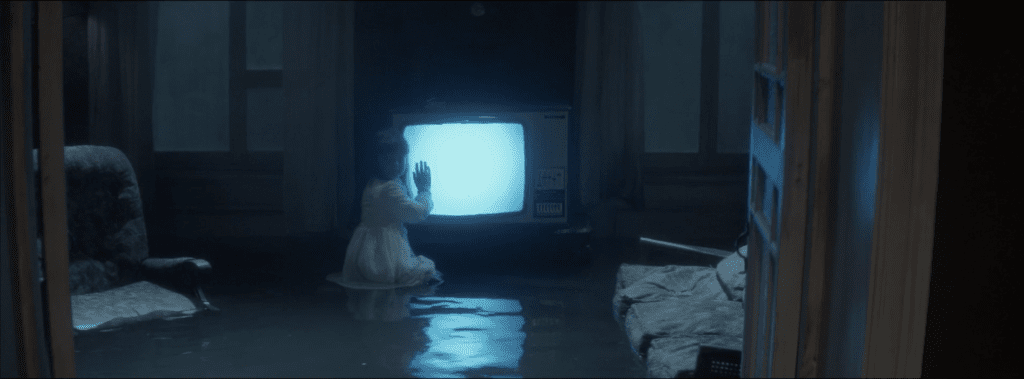
What was your approach to lighting the film? Which was the most difficult scene to light?
Each scene had to have its own distinctive look, it was meant to be like dreaming with a faint line between what is real and what is not. That’s also why the spaces needed to have an over the top mood, it is all happening inside Maya’s head. This concept gave us a lot of freedom and we were able to make our own rules.
I mainly used very strong high lights and mixed of tone to create contras, mostly blue and orange. For the stage we needed a full pre light day to be able to rig almost 25 lights, all of them had to be floating lights, cables away from the floor (because there was water every where) everything controllable from a dmx table.
One of the most difficult scenes to light was the launderette, we couldn’t find the perfect location for this scene, as Jordan really wanted a completely white and gigantic space. Instead we shot in a small laundrette and had to figure out a way to make it looks as bright and big as possible. With Federico Belloli, my gaffer, we figure out a way to cover the roof of the location with Asteras and to make it look as if they were part of the space. In the Launderette we also had to shoot a 2 green screen shots, the VFX team was then able to create a set extension so that it looked infinite.
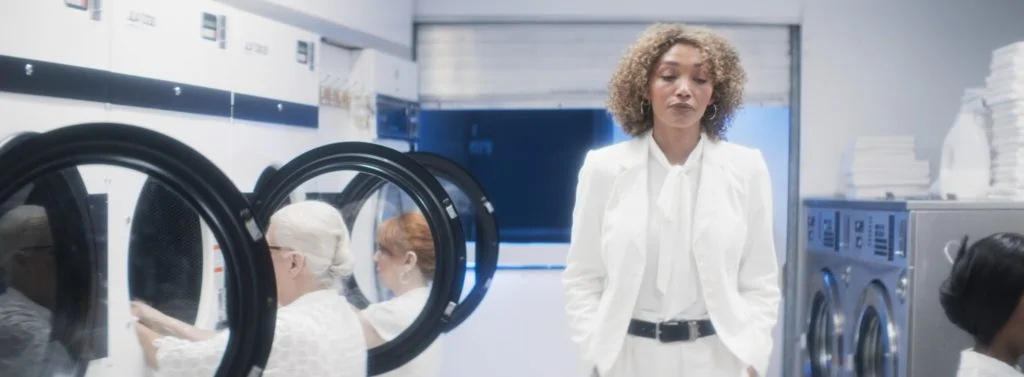
What were you trying to achieve in the grade?
My colourist Aiden Tobin and I had the chance to create LUTS for this film, he was even with me on set as our DIT, so he was aware of the look we wanted since very early on in the process, this was so helpful, the possibility of being able to watch on set something as close as possible to the final look was fantastic. Specially for the scene in “Carol’s flat”, the space was lit with a golden light coming through the windows and we created a very intense LUT on set that really helped of shaping the mood and final look on set.
It helped us so that later on in the grade we already knew what we wanted from each scene, and although it was a long process it all came together very nicely.
Which elements of the film were most challenging to shoot and how did you overcome those obstacles?
The most difficult moments were the ending scene in which Maya jumps off a 15 story tower building roof, as the camera stays still watching a beautiful sunset she walks to the edge and calmly jumps off… this is the final shot of the film.
Basically we had to find a space that looked like a real roof, that had some sort of edge that she could actually jump from and land safely in mattresses and also that had enough space for us to bring up a green screen. Our amazing team found this location by a happy accident in, it turned out to be the perfect fit for us.
Later on we gather a small team in Mexico City were they got permits to shoot from a tall building and they send us all sorts of sunset plates, our VFX team lead by Ellie and then brought everything together. We are very happy with the end result it was just how we imagined it.
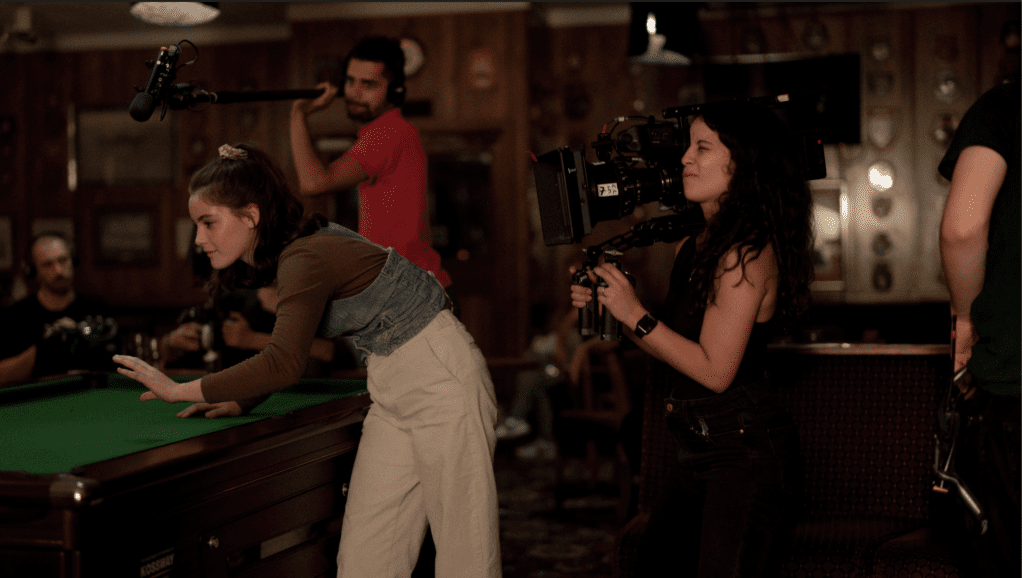
What was your proudest moment throughout the production process or which scene/shot are you most proud of?
Getting through those 8 days of shooting was really a challenge for everyone, no matter how prepared we were, we knew this project was extremely ambitious. But the proudest moment has being to shoot the bathroom scene, also a set built filled with water, all hand held, with a stunt choreographer and more than 15 shots to do. On top of that we had to use prosthetics for a fake pregnant belly, and the director also acting in this scene ( as a body double), it was such an emotional and intense scene, I absolutely loved being able to succeed that day but specially being able to give my director and actress the support they needed.
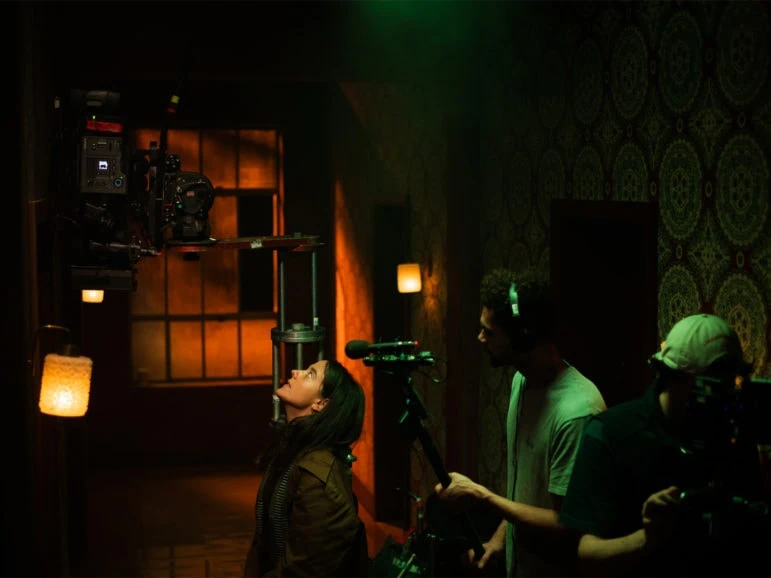
What lessons did you learn from this production you will take with you onto future productions?
I learned the importance of pre production and planning. Jordan, Nathalie and I had endless meetings months before shooting, watch lots of references, shot as many test as possible to the point that we couldn’t talk about the film any more, everything was clear, and it really paid off. I’ll try take this way planning into my future projects.






